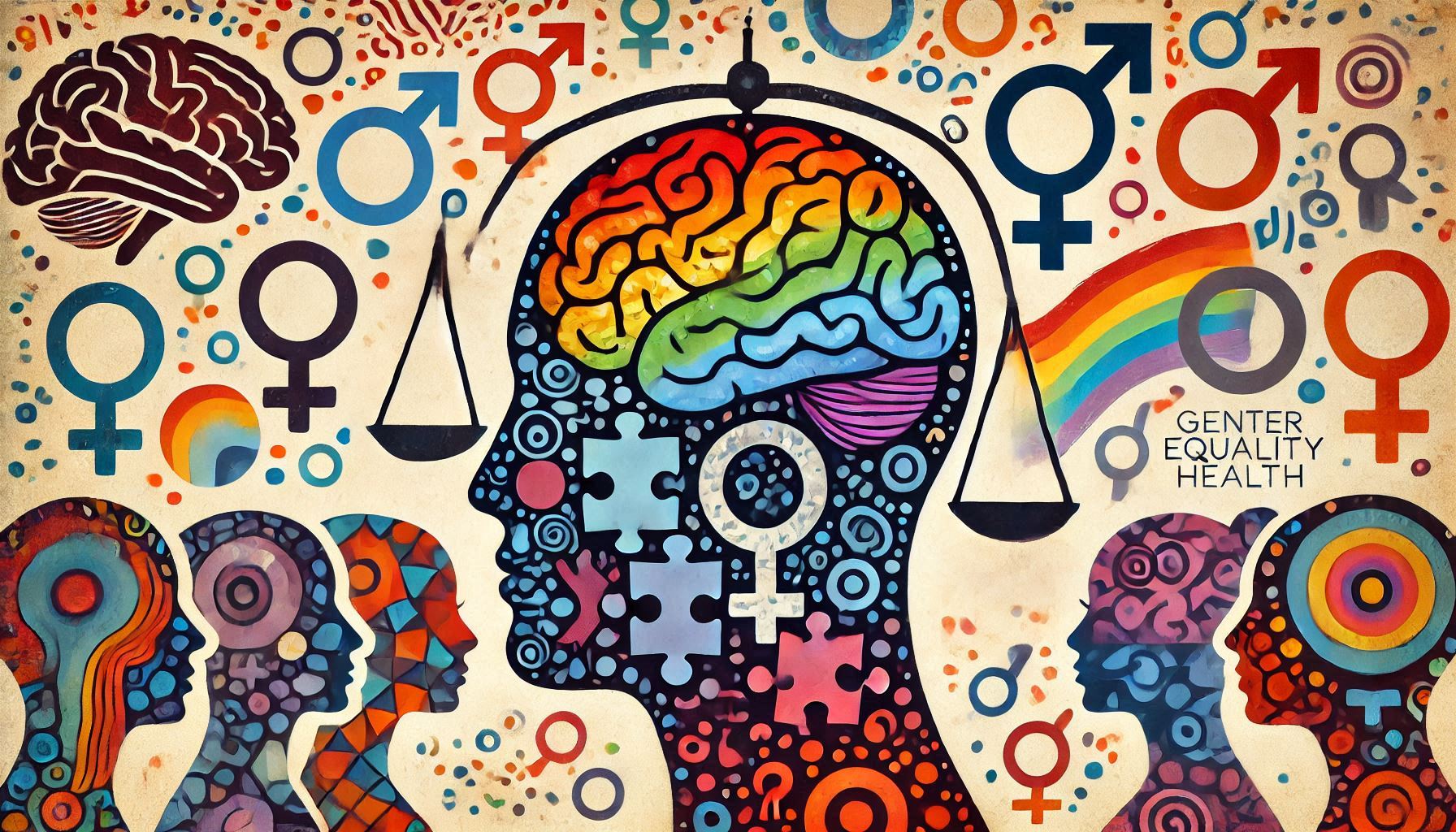Mental health is a fundamental part of our overall well-being, yet it doesn’t affect everyone the same way. Men and women face unique challenges when it comes to mental health, shaped by biological, psychological, and societal factors. Recognizing these differences is key to understanding and supporting mental health in a way that is fair and effective.
This article explores how gender influences mental health, the distinct issues faced by men and women, and the steps we can take to address these challenges in a meaningful way.
Mental Health Differences between Men and Women
Mental health issues affect men and women differently due to biological, social, and psychological factors. These distinctions influence not only the types of mental health conditions they experience but also how they express symptoms and seek help.
Prevalence of Conditions
- Women: Women are more likely to experience internalizing disorders such as anxiety and depression. Studies indicate that hormonal fluctuations, societal pressures, and caregiving responsibilities contribute to this higher prevalence.
- Anxiety Disorders: Women are nearly twice as likely as men to develop anxiety disorders. This may be linked to hormonal factors, such as the impact of estrogen and progesterone, which regulate stress responses but can also heighten vulnerability during menstrual cycles, pregnancy, and menopause.
- Depression: Women report feelings of sadness, guilt, and worthlessness more often than men. Postpartum depression and premenstrual dysphonic disorder (PMDD) are examples of conditions unique to women that underscore the role of biology and societal pressures.
- Men: Men are more likely to face externalizing disorders, such as substance abuse and conduct disorders, and exhibit higher suicide rates. This disparity is influenced by societal expectations around masculinity and emotional restraint.
- Substance Abuse: Men often turn to substances as a coping mechanism for unexpressed emotions. Cultural norms that discourage vulnerability may push men to self-medicate rather than seek professional help.
- Suicide: Men die by suicide at significantly higher rates than women, often due to using more lethal methods and a reluctance to seek emotional support.
Expression of Symptoms
- Women: Tend to express emotions more openly, which can make their mental health challenges more visible. This openness often leads to earlier diagnoses and treatment, though women may also face dismissal of their symptoms as overemotional or stress-related.
- Men: Often exhibit “masked depression” through irritability, anger, or risky behavior rather than traditional signs of sadness. This can delay diagnosis and worsen outcomes.
Help-Seeking Behaviors
- Women: Are generally more willing to seek help and access mental health resources, perhaps due to less societal stigma around emotional vulnerability for women.
- Men: Tend to underutilize mental health services, with stigma and societal expectations acting as significant barriers. Efforts to frame help-seeking as strength are crucial for encouraging men to pursue care.
The Role of Societal Expectations
- Women often face pressure to balance caregiving roles with professional responsibilities, which can exacerbate stress and contribute to burnout. Unrealistic beauty standards also increase the risk of eating disorders.
- Men are often expected to be stoic providers, leading to suppressed emotions and isolation. This traditional view of masculinity discourages open communication and fosters unhealthy coping mechanisms.
Addressing Gender-Specific Needs
To support mental health effectively, it is essential to address these gender-specific factors. For women, this means providing support for caregivers, addressing hormonal influences, and challenging societal beauty standards. For men, fostering environments that normalize emotional expression and provide male-specific peer support can help break down barriers to care. By acknowledging these differences, mental health interventions can be tailored to meet the distinct needs of both genders
How Biology Impacts Mental Health
The Role of Hormones in Women’s Mental Health
Hormones have a significant impact on women’s mental health throughout their lives. These hormonal changes can make women more vulnerable to certain conditions.
- During the Menstrual Cycle: Some women experience mood swings or even severe depression before their period, known as premenstrual dysphonic disorder (PMDD).
- Pregnancy and Postpartum: Hormonal shifts during and after pregnancy can lead to postpartum depression or anxiety. Women may feel overwhelmed, isolated, or even ashamed for not feeling the “joy” that’s expected with motherhood.
- Menopause: The drop in estrogen during menopause can cause mood changes, anxiety, and even depression.
Men, Testosterone, and Stress
While testosterone’s influence on mental health isn’t as well understood, it does play a role in regulating emotions and stress responses. Men also respond to stress differently, often externalizing it through anger or risky behaviors instead of expressing vulnerability.
Societal Expectations and Mental Health
The Pressure on Women
Women often juggle many roles—caregiver, employee, partner, and more. This balancing act can create enormous stress and leave little room for self-care.
- Caregiving Strain: Many women take on the role of primary caregiver, whether for children, aging parents, or both. This can lead to exhaustion, anxiety, and depression.
- Unrealistic Beauty Standards: Society places significant pressure on women to look a certain way. This contributes to the prevalence of eating disorders like anorexia and bulimia.
The Pressure on Men
For men, societal expectations often emphasize strength, independence, and emotional control. These cultural norms can prevent men from seeking help or even recognizing when they need it.
- The Provider Role: Men are often expected to focus on financial success and providing for their families. Failure to meet these expectations can lead to feelings of inadequacy or depression.
- Emotional Stoicism: Many men grow up hearing phrases like “man up” or “boys don’t cry,” which discourages them from expressing emotions or seeking support.
Mental Health Conditions and How They Differ by Gender
1. Anxiety Disorders
Women are about twice as likely as men to experience anxiety. This could be due to biological factors like hormonal shifts, as well as societal pressures to “do it all.”
Men may also experience anxiety, but they are less likely to report it or seek help, often masking it with behaviors like substance use or aggression.
2. Depression
Depression manifests differently in men and women:
- Women often feel sadness, fatigue, or worthlessness, making it easier to recognize.
- Men may show irritability, anger, or risk-taking behavior, which can make depression harder to spot.
3. Substance Abuse
Men are more likely to use alcohol or drugs as a way to cope with stress or emotional pain, leading to higher rates of addiction. Women, however, tend to progress from casual use to addiction more quickly, making early intervention crucial.
4. Eating Disorders
Eating disorders like anorexia and bulimia are more common in women, driven by societal pressures around body image. However, men also face body image challenges, such as pressure to build muscle, leading to conditions like muscle dysmorphia.
5. Suicide
Men die by suicide at much higher rates than women, often due to using more lethal methods and not seeking help for underlying issues. Women attempt suicide more frequently but are less likely to die due to choosing less lethal means.
Barriers to Getting Help
Stigma
- For Men: Many men fear being seen as weak or unmanly if they admit they’re struggling.
- For Women: While women are more likely to seek help, they sometimes face dismissal of their symptoms, particularly when tied to motherhood or caregiving.
Access to Care
- Many people, regardless of gender, face obstacles like high costs, lack of nearby therapists, or limited insurance coverage.
- Inadequate gender-specific care can also be a barrier, as not all treatment approaches account for gender differences.
Addressing Gender-Specific Mental Health Needs
For Women
- Support for Caregivers: Providing resources to lighten caregiving burdens, like childcare or eldercare services, can help reduce stress.
- Body Positivity Campaigns: Promoting healthy and diverse beauty standards can lower the risk of eating disorders.
For Men
- Breaking the Stigma: Encouraging open conversations about emotions can help men feel more comfortable seeking help.
- Peer Support Programs: Men often benefit from group settings where they can share experiences without fear of judgment.
For Everyone
- Tailored Therapies: Gender-sensitive approaches in therapy can address specific challenges faced by men and women.
- Education and Advocacy: Public awareness campaigns can challenge harmful stereotypes and promote mental health care for all genders.
Emerging Issues: Beyond the Gender Binary
Mental health challenges faced by non-binary and transgender individuals are often overlooked, yet they demand urgent attention. People who identify outside the traditional gender binary often navigate a world structured around rigid definitions of male and female. This misalignment can lead to significant stress and emotional strain, compounded by stigma, discrimination, and systemic barriers to care.
Non-binary and transgender individuals experience disproportionately high rates of anxiety, depression, and suicidal ideation compared to their cisgender counterparts. These challenges are frequently linked to experiences of rejection—whether from family, peers, or society at large. Additionally, discrimination in workplaces, healthcare settings, and public spaces can exacerbate feelings of isolation and invalidation.
Access to affirming mental health care is a critical issue. Many mental health professionals lack adequate training to provide culturally competent support for non-binary and transgender clients. Misgendering and insensitivity in therapy settings can further discourage individuals from seeking help.
Conclusion
Mental health is deeply connected to gender, influencing how people experience, express, and address mental health issues. By recognizing these differences, we can create better support systems that cater to the unique needs of men, women, and non-binary individuals. Breaking down barriers, reducing stigma, and tailoring care are essential steps toward a future where everyone has the tools to manage their mental health effectively—no matter their gender.
SOURCES
The Trevor Project. (2023) – U.S. National Survey on LGBTQ Youth Mental Health
Thorne, N., et al. (2023) – Anxiety and Depression in Gender-Diverse Populations: Systematic Review
Watkinson, R. E., et al. (2024) – Gender-Related Self-Reported Mental Health Inequalities in Primary Care in England.
HISTORY
Current Version
December 09, 2024
Written By
ASIFA








Leave a Reply